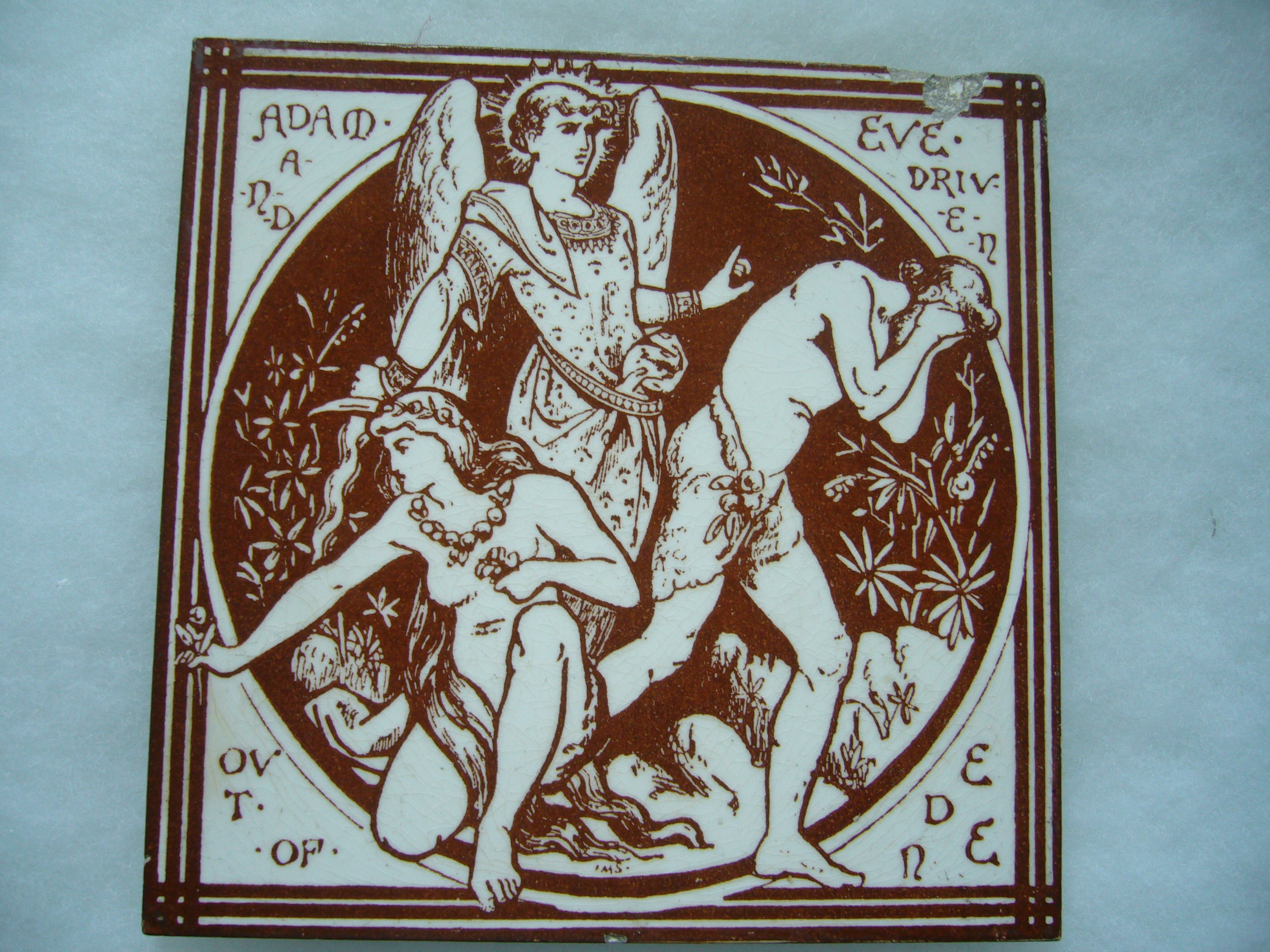This Homepage is made as a sister web-site of Delft Tile. Please visit "The World of Delft Tile" if you are intereted in Delft Tile.






In England floor tiles had been utilized for pavings at Cathedrals and Palaces since 13th century. After William of Orange acceded to the throne in 1689,
Dutch culture was introduced gradually and wall tiles were initiated to be used. Also as a result of Eighty Years War between Spain and Holland, tile craftmen
moved from Holland to England so Delft tiles were initiated to be manufactured in England in the second half of 17th century. Nevertheless, tiles usage in England were
mainly for floor pavings. Delft tiles manufactured in England are called English Delft. There are no big differences with designs and coloring
between English Delft and Dutch Delft. Only difference to be seen, if any, is that English Delft is a bit blue than Dutch Delft in the early stage.
In 1756 John Sadler invented the copper plate transfer printing, which enabled mass production of English Delft tiles and rich people started to use
tiles for wall decoration. In 18th century the specfic design with English Delft such as Bianco-Sopra-Bianco (means white on white) borders and Rococo style design
came on board. However English Delft faded out as Victorian Tiles that were produced based on the industrialized tile manufacturing techniques described below
were invented.
Victorian Tiles were manufactured during the Victorian era of England.
In the second half of 18th century Josiah Wedgwood improved the quality of material clay (called creamware). Josiah Spode invented under-graze transfer printing.
In 1830s encaustic tiling to utilize multi colored clays, which improved the medival encaustic tiling method, were established. Further dust tile pressed production
were developed. In addition in around 1850 Minton invented a Majolica Tile with multi-colors and/or relief.
Eventually as the indusrialized mass production of tiles were established, tiles manufacturing grew up to the major industry in England.
Victorian tiles were used both for the decoration and sanitation of houses of citizens who were formed under the Industrial Revolution and public buildings
or repair of paving tiles for Cathedrals and Abbeys. Also a number of Victorian tiles were exported to the United Staes and British Colonies for the decoration of
Goverment buidings overthere.
In late 19th century Arts & Craft Movement rised critisizing against mass production merchandise and William De Morgan and William Morris made hand made
decoration tiles, however they were not spred into middle class people because they were too expensive.
Size of Victorian Tiles is usually 6 x 6 inchs. A manufacturer's mark and/or name is stamped on the back. There were more than ten tile companies. A famous manufacturer was Minton China Works, Minton Hollins, Wedgwood, Maw, Pilkingtons and so on. Victorian Tiles was designed by the artist such as William Wise, John Moyer Smith, Walter Crane, and Christfer Dresser who contracted with each tile manufacturer. William De Morgan and William Morris who leaded Arts and Craft Movement are also popular. This is the significant difference from Delft Tiles whose designs were copied from prints or lithographs then available.
Designs of Victorian Tiles are much more various than Delft Tiles due to diversified manufacturing methos such as encaustic tilinig, mold tiling,
incised decoration and mixing different grazing components. More than 400,000 design patents were applied; for example, the design books of Minton
used between 1870 and 1900 include more than 2,000 designs. Major designs are categorized as follows: Greek and Roman mythological subjects, copies of Chinese,
Japanese or Persian designs, imitations of medival tiles, British legend such as Idyllis of the King, plants, animals, fruits, birds, portrait of famous person,
sightseeing spots, landscapes, bible theme, fables and/or stories such as Aesop, Cindellera, Red Hood etc.
Series of designs (usally 12 decors per one set) were issued with each subject.
Not only Victorian Tiles were utilized for the decoration or paving of houses, Cathedrals and Abbeys and public buildings but they were built in furnitures
like tables and chairs. Also tile panels were used for public buildings and Cathedrals.